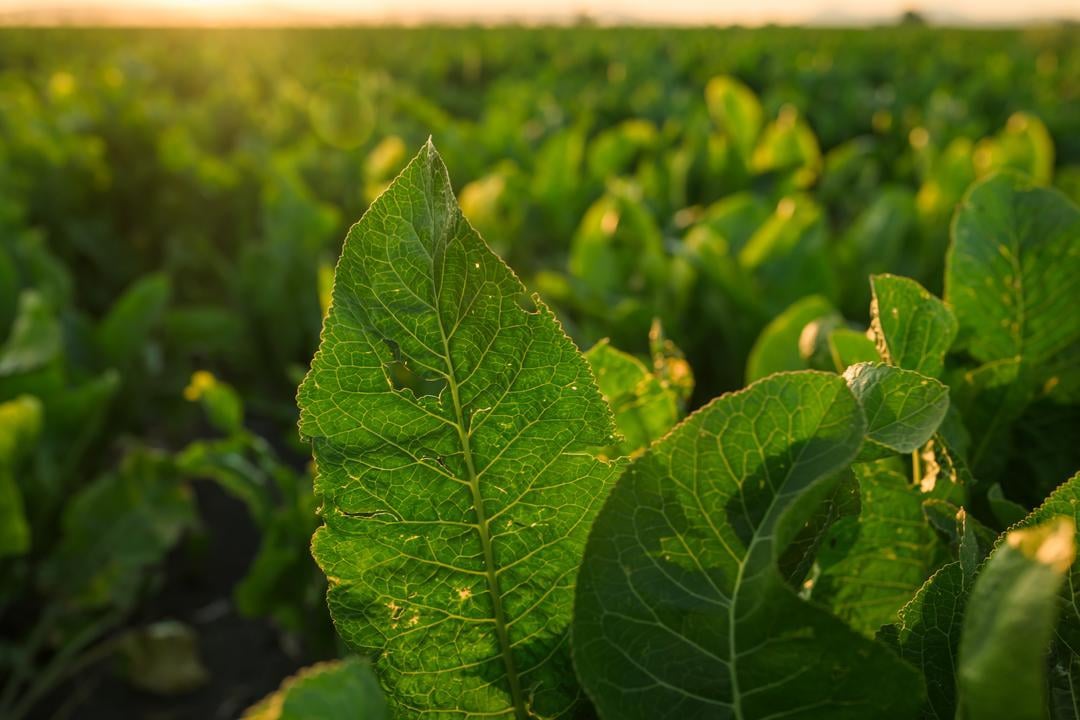What is Horseradish and How is it Grown?
What IS horseradish? We’re not talking about prepared horseradish, the white paste that adds an undeniably delicious kick to roast beef, but actual horseradish root. We met with Scott Seus in Tulelake, California, to learn more about how horseradish is grown and harvested.
So…what is horseradish?
Horseradish is a root vegetable, and part of the Brassicaceae family – meaning it’s closely related to veggies like mustard, wasabi, broccoli, cabbage, and radishes. However, unlike most members of the mustard family, it is a vigorous perennial. In fact, farmers continue to harvest from the same root for up to 20 years!
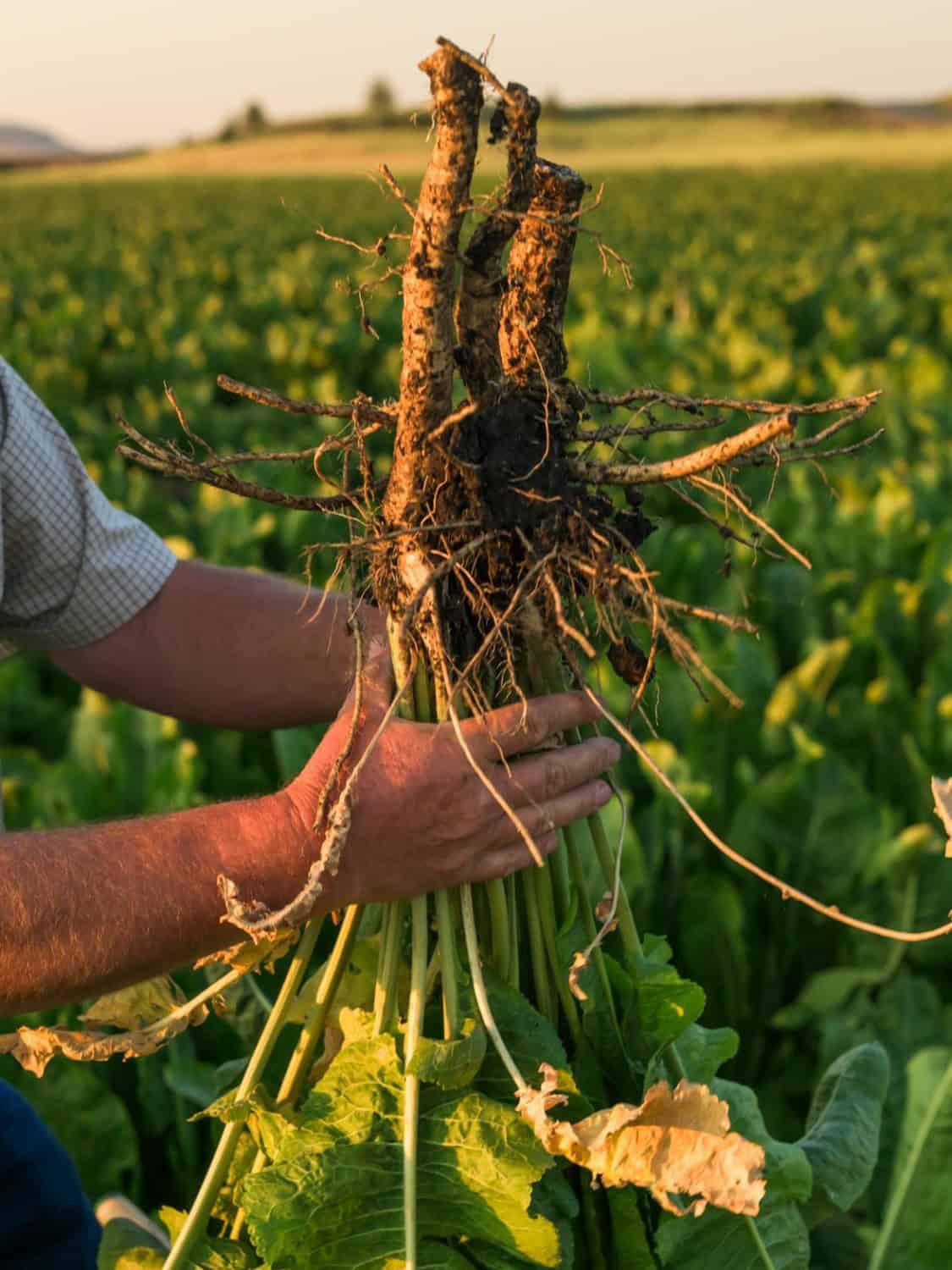
Is horseradish really a radish?
Horseradish and radish are two distinct plants, although they both belong to the Brassicaceae family (also known as the mustard family). Radishes are an annual root vegetable and have a more mild, peppery flavor.
Are horseradish and wasabi related?
As it is with radishes, horseradish and wasabi are also related, but not the same plant. However, if you’ve enjoyed wasabi in California, outside of a high-end Japanese restaurant, it may have actually been horseradish mixed with mustard and food coloring, then used to “make” wasabi – which is common outside of Japan.
What does horseradish taste like?
People often describe it as “sharp, pungent and spicy”. It has a clean taste that may cause your sinuses to burn.
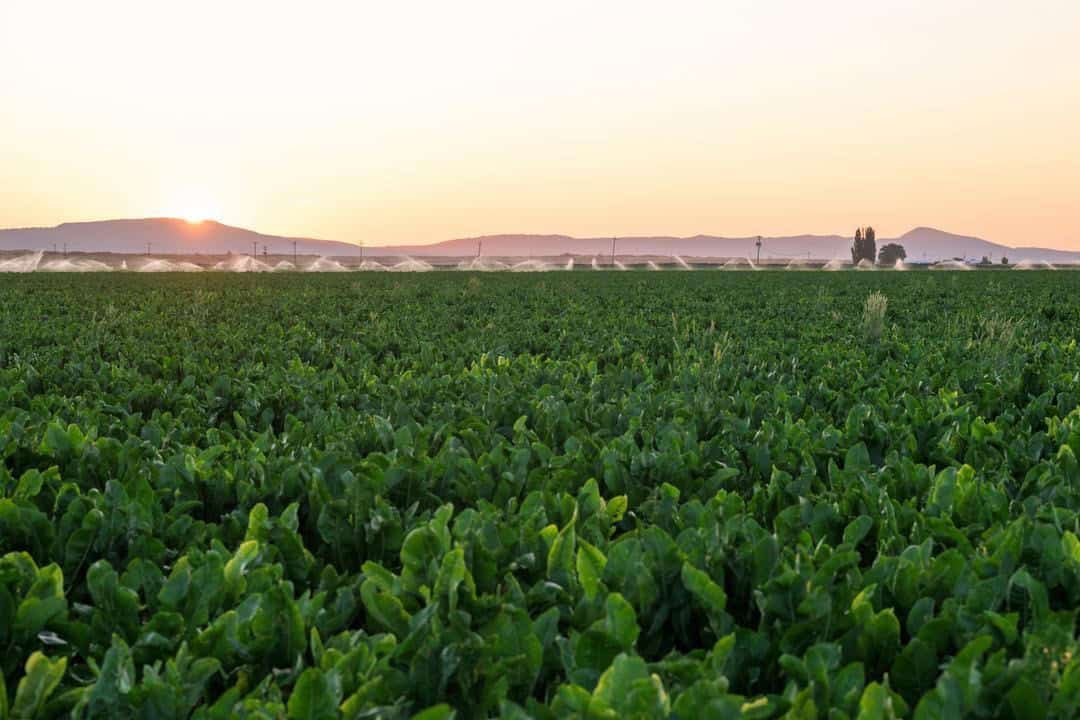
Where does horseradish grow in California?
Virtually all of the California crop – and over ⅓ of the US crop – grows in Tulelake, California. The area’s unique volcanic soil and favorable climate allow horseradish to thrive.
How is horseradish grown in California?
Most farms plant new fields using “seed” – side roots from a harvested horseradish root. Scott Seus, a third-generation grower in Tulelake, explains, “As a farmer growing a crop, I am in control not only of my crop that I’m raising, but also of my seed stock. It is a perennial, and once you plant it, it is in there until you fight like the dickens to get rid of it.” Scott shakes his head and adds, “Every tillage practice that you use perpetuates and propagates that crop into a headache. So, we are very careful about how we plant it.” So careful, in fact, that Scott uses GPS technology to track the exact location for planting of each root. Once farmers plant a field, they allow the root to grow for two years before the initial harvest.
A different approach to irrigation
Scott, like the farmers in the Tule Lake Basin, approach irrigation differently than farmers in other parts of the state. Many California farmers rely on drip irrigation to deliver the exact amount of moisture necessary for each plant to thrive. Tulelake farms, however, sit upon an ancient lake bed, with 1200 feet of topsoil between the surface and the underlying volcanic crater.
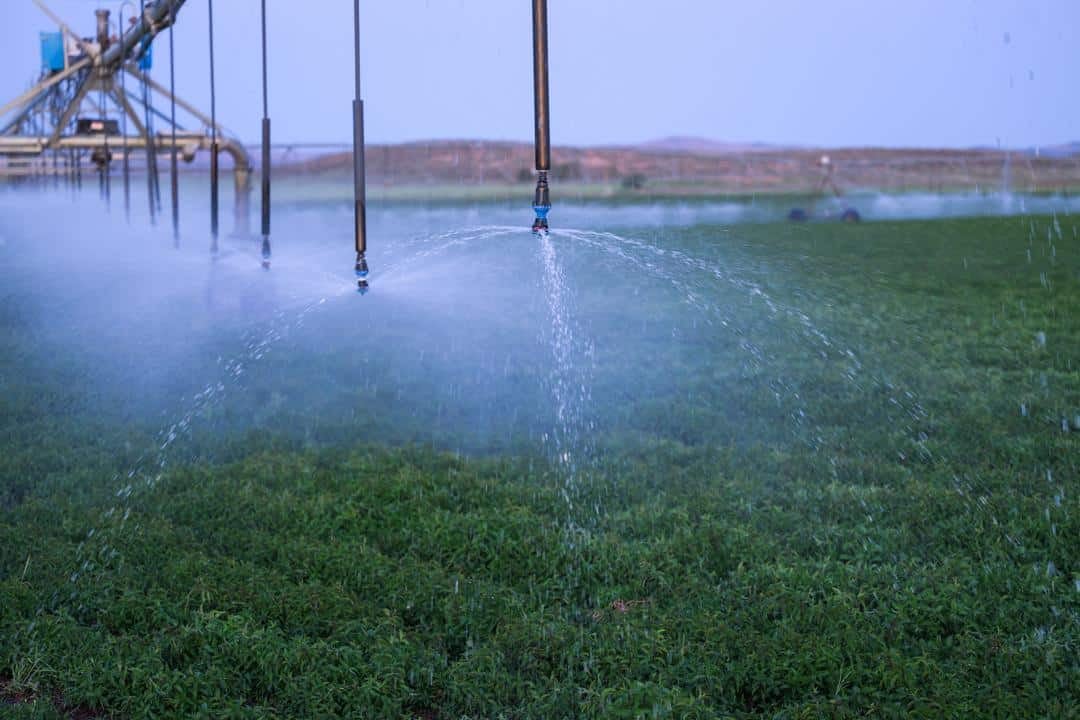
Farming in this specific soil demands a different approach. Scott explains, “Horseradish requires a fair amount of water. We apply that through pivots, through solid set irrigation. We can flood that crop through deficit irrigation, we only hurt ourselves.”
He continues, “This (the Tule Lake Basin) is a giant lake bed – the 1200 feet of top soil is duck manure and tule. It’s a giant bowl of jelly – which is why we have to keep the top part of that profile hydrated, otherwise it starts cracking like a pond.”
Want to learn more about why using flood irrigation may be a sustainable practice in Tulelake, California? Read our blog post highlighting Seus Family Farms, Sustainability Looks Different at Seus Family Farms.
How is horseradish harvested?
Harvest takes place twice a year, in the spring and fall. Scott explains, “The process is pretty simple, but every horseradish grower has a different idea of how horseradish should be harvested and has a different piece of equipment for it. We generally cut it off 13 inches below the ground. What we leave underneath the surface is called the mother root, which may go all the way to bedrock or high water table. It will put new shoots up and within two or three months, you’ll have that crop come back out of the ground.”
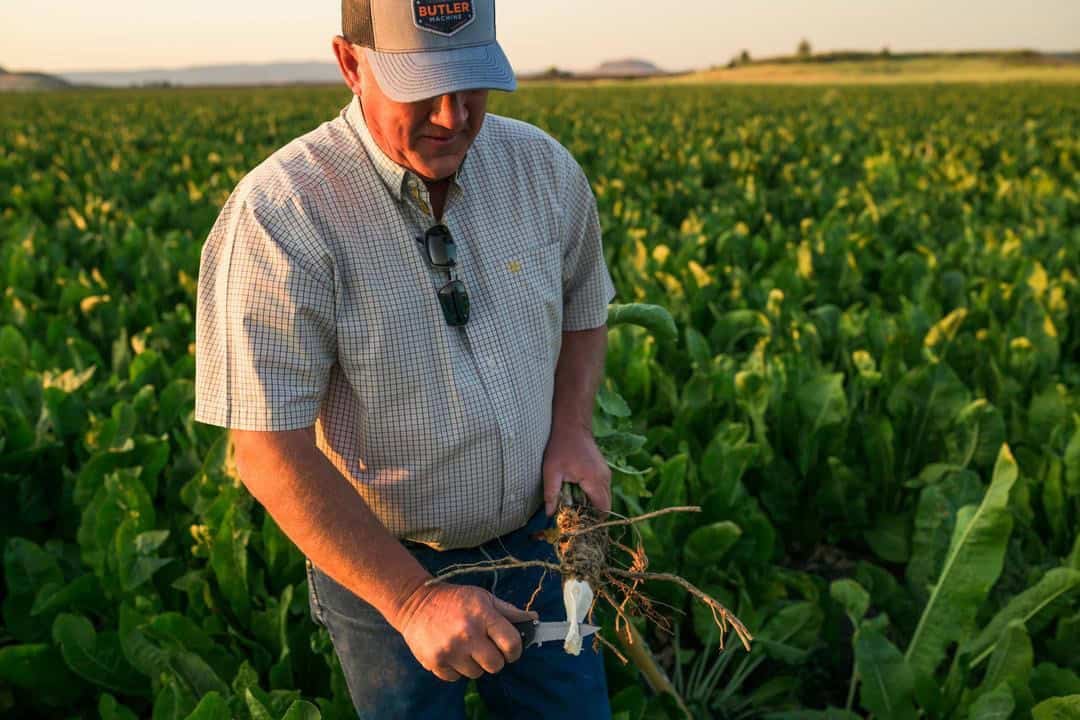
After harvest, the dirt is separated from the roots, and they are whisked away to a packing shed. Because each root is uniquely shaped and sized, post-harvest processing is done entirely by hand.
Scott notes, “There is a high labor cost to horseradish harvest – removing the dirt, removing the hair roots, and then taking off any of the tops that are remaining.”
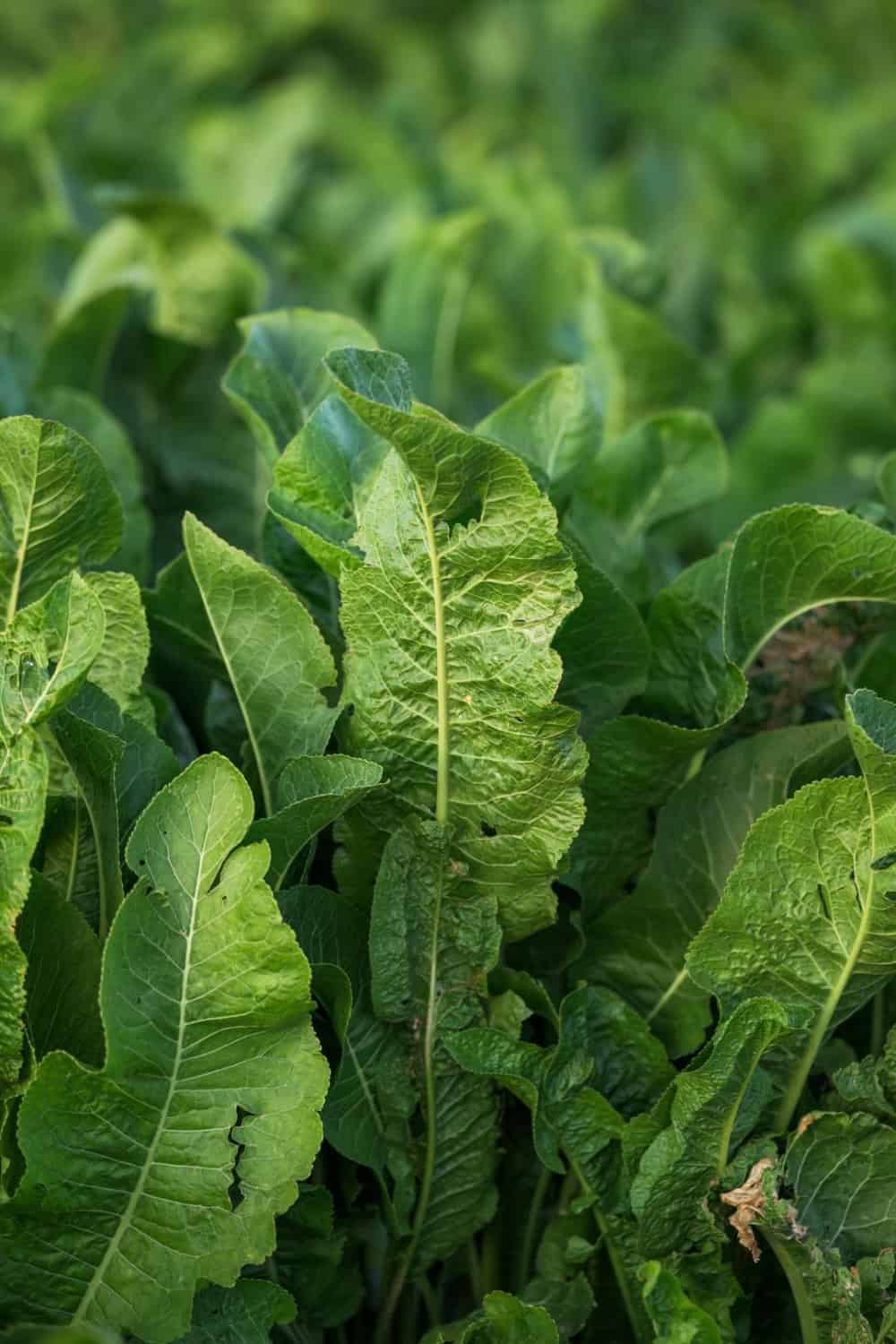
Are horseradish leaves edible?
Because it is a root vegetable, most farmers grow horseradish specifically to harvest the potent root. However, the leaves are also edible. The leaves of young plants have a flavor similar to arugula, while the texture and taste of more mature leaves are more reminiscent of kale.
How is horseradish stored after harvest?
After cleaning, the roots go to storage at temperatures below freezing for up to six months. Scott adds, “During that six months, the processors that are turning it into that tasty horseradish sauce are drawing product from our cooler to meet their customers’ needs.” The crop from Seus Family Farms is used in mustards, soups, prepared horseradish and cocktail sauces. A small portion of each harvest is set aside to market as “Selects”. These high-quality, blemish-free fresh horseradish roots are packaged and sold to restaurants, cruise ships and gourmet grocers.
How to store horseradish at home
If you don’t happen to have a below-zero freezer in your home kitchen, there are plenty of other ways to store horseradish at home. Wrapped tightly in plastic, unwashed roots should last a few weeks in your fridge. If you’re looking to make them last a little longer, try grating it and storing it in a jar of vinegar. This will also help to mellow the intense flavor – just a bit. Alternatively, you can try chopping them into small chunks and stored in an airtight freezer container.
Try these delicious ways to enjoy fresh and prepared horseradish!
Spread horseradish sauce on sandwiches or add a dollop of our Creamy Horseradish Sauce on top of grilled steak or roasted prime rib. Grated fresh horseradish is a delicious addition to our Bloody Mary Mix or Garden Green Bloody Marys!
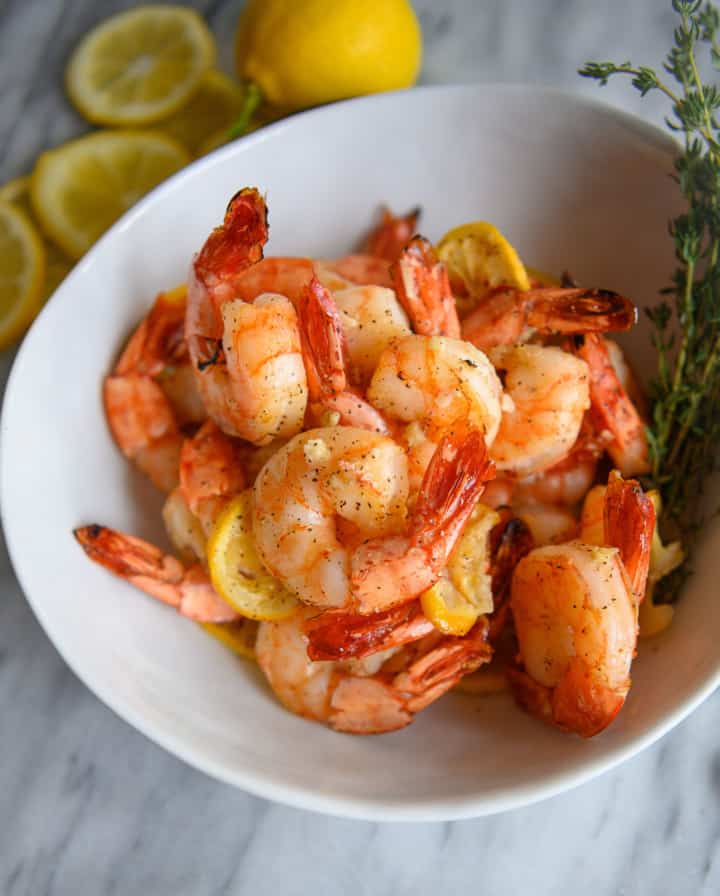
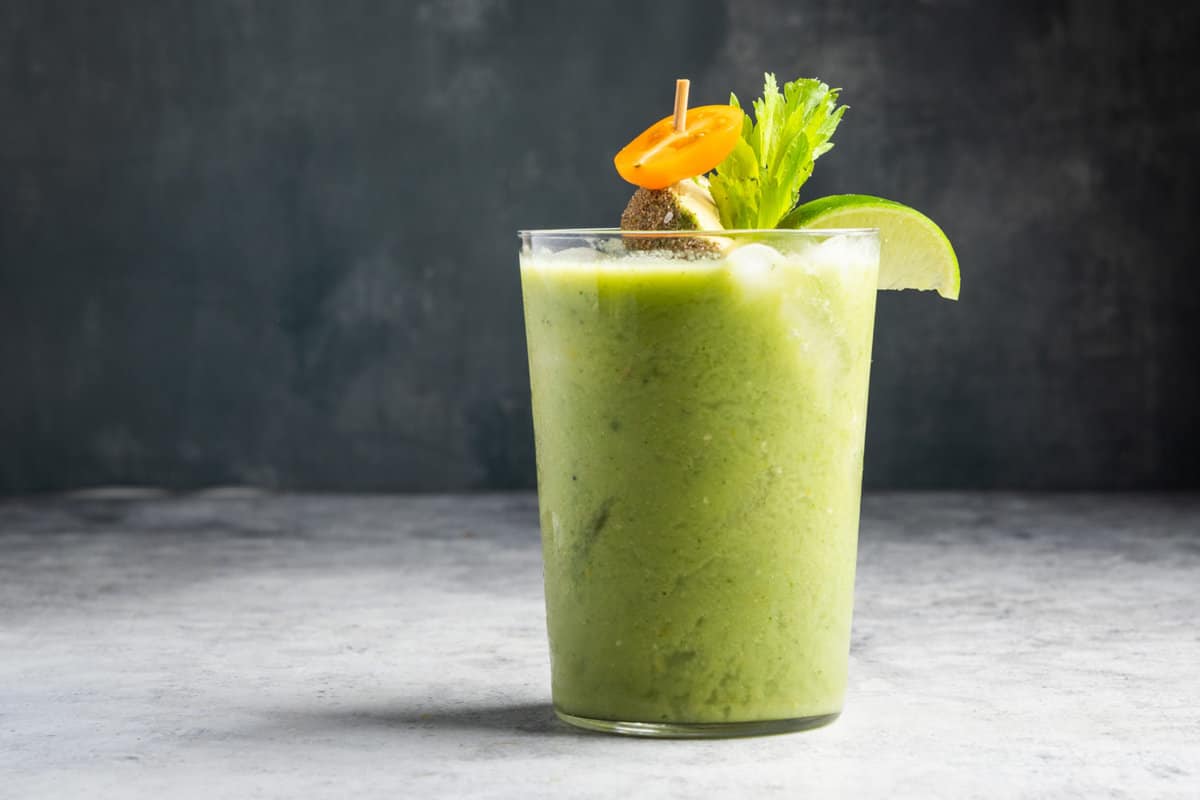
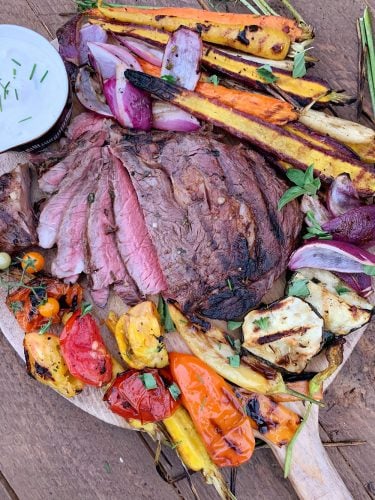
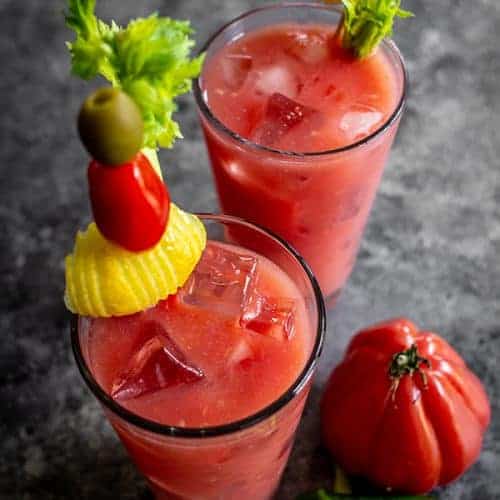
Article by Hilary Rance. Photography by Paprika Studios.

